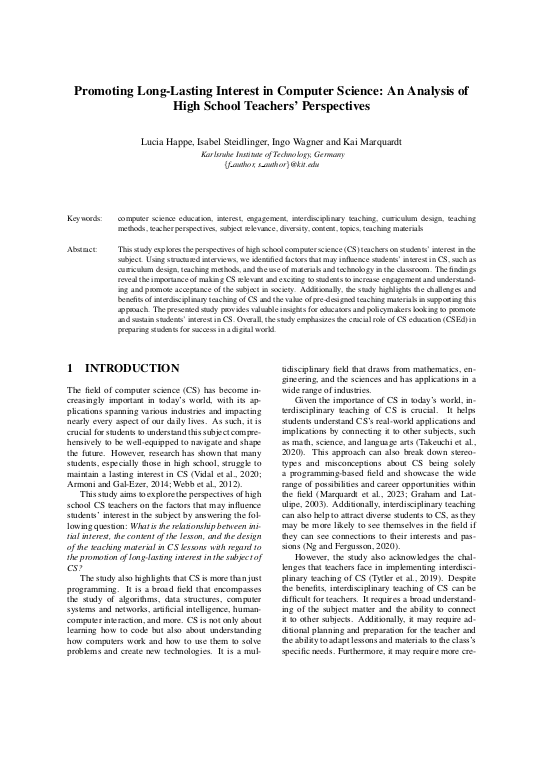What makes kids love (or dread) computer science? Teachers spill the beans.
“Computer Science? That’s hacking, right?”
Welcome to the minds of seventh graders when they first step into a CS classroom.
In a new study from the Karlsruhe Institute of Technology, researchers interviewed seven passionate high school computer science teachers in Germany to determine what really keeps students interested in computer science and what sends them running for the hills.
Here’s what we found:
Kids want to like Computer Science
Students come into their first CS class pretty excited. They’ve heard it’s cool, helpful, and mostly about programming. Some even dream of making games or becoming hackers (thanks, Hollywood).
But here’s the catch: school CS often isn’t what they imagined.
The Reality Check
Only about a third of the 7th-grade CS curriculum is actually programming. The rest? Topics like data encoding, networks, and digital citizenship. It’s important stuff, sure, but not always what kids sign up for.
One teacher said it best:
“The fact that we don’t work on the computer for a large part is a bit of a damper for the students.”
Girls Feel the Pressure
While boys tend to jump in, even if overconfident, girls often hesitate. They’re more likely to doubt their abilities, even before trying. Teachers have noticed that small wins early on (think: solving a problem or making something work) can flip the script completely.
“Girls have a harder time with hands-on tasks. They’re too cautious. You have to support them more, but then they fly.”
What actually works?
Teachers shared what sparks joy in CS lessons:
- Relevance to daily life (e.g. AI, data privacy)
- Creative tools like Scratch or programmable embroidery (!)
- Mystery and play, like cryptography puzzles
- Big questions that connect CS to real-world issues
And what doesn’t?
- Math-heavy lessons without context
- Too much theory, not enough visible impact
- Overly technical tools that leave beginners lost
Want more kids to love CS? Think Interdisciplinary.
The big takeaway? CS should be taught through stories, projects, and real-life connections, not just syntax. When students see how computing links to art, music, science, or social justice, they’re more likely to find their place in the digital world.
“Show that IT is not just IT – it’s everything and everywhere.”
Based on the paper “Promoting Long-Lasting Interest in Computer Science: An Analysis of High School Teachers’ Perspectives” by Lucia Happe et al. at KIT.

by Lucia Happe
